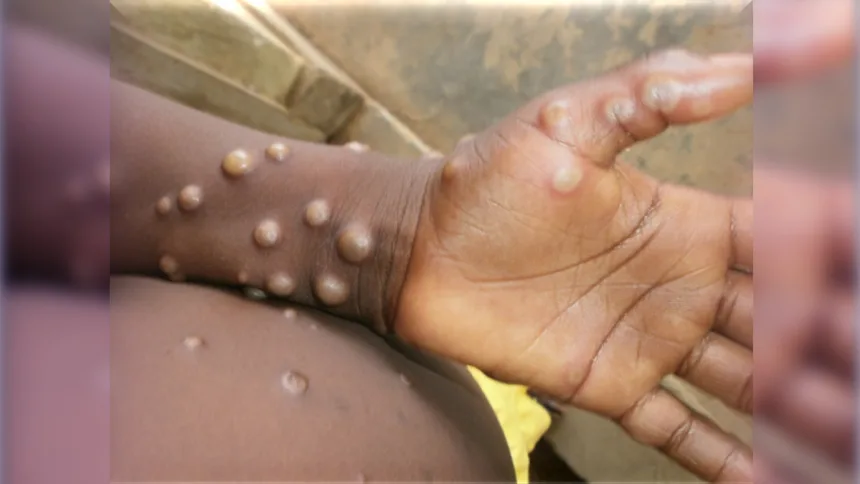The upsurge of Mpox cases compelled the World Health Organization Director-General Dr Tedros Adhanom Ghebreyesus, to declare it a global public health emergency on 14th August. The announcement comes after the viral infection in the Democratic Republic of Congo (DRC) spread to its neighboring countries, and beyond Africa, making it a global concern for the second time in two years.
There has been emergence of new variants of Mpox and its significant rise has garnered global attention, leaving the public in worry due to its contagious nature. So here is all you need to know about Mpox, ways to prevent its spread and everything in between.
What is Mpox?
Mpox, formerly known as Monkeypox, is an infectious disease caused by Monkepox virus that is similar to smallpox. It is a zoonotic disease, meaning it can be transmitted from animals to humans. It was first discovered in the late 1950s, and first identified in humans in 1970.
Initially, Mpox cases were restricted to certain regions of Africa, but in recent years there have been occasional outbreaks in non-African regions apparently due to international traveling and exports.
Signs and Symptoms
WHO lists down the following:
- Rash (blisters)
- Fever
- Sore throat
- Headache
- Muscle aches
- Back pain
- Low energy
- Swollen lymph nodes
Symptoms typically last for 2-4 weeks but can last longer if the immune system is weak. However, some people can be infected without developing any symptoms.
Some of the severe symptoms may include — serious skin damage, pneumonia, corneal infection with loss of vision; pain or difficulty swallowing, vomiting and diarrhea causing severe dehydration or malnutrition; sepsis (infection of the blood with a widespread inflammatory response in the body), inflammation of the brain (encephalitis), heart (myocarditis), rectum (proctitis), genital organs (balanitis) or urinary passages (urethritis) or, death.
As per the available data, WHO has found that the mortality rate for Mpox is between 0.1% and 10%. However, various other factors like access to health care and underlying immunosuppression are also to be considered.
How Does Mpox Spread?
Although this virus is self-limiting (i.e. has a history of resolving itself with or without specific treatment), it can cause severe illness leading to death, especially among children, pregnant women and those with weak immune systems. Here are some ways the virus can be transmitted.
- Through contact with skin lesions, or the skin of an infected person.
- Kissing, talking or breathing too close to an infected person.
- Through respiratory droplets or short-range aerosols.
- Contact with contaminated objects — subjects or surfaces that might have had contact with the infection (the bed, clothing, towels, etc. of the infected person).
- Infection will be transmitted from an infected animal through its bites, scratches, through contact with its wounds, or through consumption of undercooked meat of an infected animal.
In a nutshell, it is transmitted through direct contact (face-to-face, skin-to-skin, mouth-to-mouth or mouth-to-skin contact) with an infected person or an animal, their bodily fluids, respiratory droplets, or contaminated materials.
Apparently, household members, and partners are at risk of contracting this infectious disease primarily.
How Does It Make Its Way to The Body?
Unlike the COVID-19 virus, mpox requires more prolonged and direct contact for transmission. The virus enters the body through broken skin, respiratory tract, nose, eyes or mucosal surfaces (oral, pharyngeal, ocular, genital, anorectal). It then spreads through the blood which causes flu-like symptoms and develops lesions on the skin.
Click here to join our WhatsApp channel
Follow These Precautions
Most cases are usually mild with 5-25 lesions but some can be severe enough to kill with hundreds of lesions all over the body, says a scientist Mark Michael. So, it is better to take precautions and prevent its spread.
- Follow the basics of personal hygiene — washing hands, etc.
- Avoid contact with those who are sick or infected, including sick or dead animals.
- Use gloves and other personal protective clothing and equipment if you are in an infected area.
- Ensure the food containing meat is cooked thoroughly before eating.
- If you suspect you might be infected, seek medical advice and isolate yourself until you have been evaluated and tested.
- Raise awareness in your communities and families.
- Previously the virus was misattributed to monkeys. However, researchers now believe that rodents are the primary reservoir of the virus. So, watch out!
Also Read: MOPH Qatar Boosts Surveillance for Early Mpox Detection
Few Self-Care Advices for Those Infected
- If you are infected, do not come in contact with anyone until and unless all of your lesions have healed and a new layer of skin has formed underneath.
- If you are recovering in isolation at home, stay hydrated, eat well, get enough sleep and take care of your mental health.
- Use separate bathrooms, utensils, objects, etc.
- Avoid scratching your skin and keep it dry and uncovered.
- But, if you are not isolated, keep the rashes covered using cloth or bandages.
- Keep the rash clean using sterilized water or antiseptic.
- Rinse your mouth using salt water for sore throat.
- Using baking soda or Epsom salts during a warm bath can ease the discomfort of sores on the body.
- Paracetamol can help with easing down the pain caused by lesions when necessary.
- Seek advice from healthcare workers for managing stronger pain and severe discomforts.
- After you have recovered, use condoms as a precaution for about 3 months.
Testing and Treatment
Testing: The symptoms and signs of Mpox can be mistaken for other infections and conditions that appear similar (herpes, chicken pox, measles, etc.). Therefore, it is essential to distinguish Mpox so that it can be treated immediately and further spread can be prevented.
It can be detected through laboratory testing. Blood test is not recommended, instead Polymerase chain reaction (PCR) test is preferred for detecting Mpox since they are DNA viruses.
Treatment: Once it has been detected, early and supportive treatment is essential to manage symptoms and prevent further complications.
In countries where Mpox vaccine (Jynneos) is accessible, the vaccine should be taken within 4 days of contact with the infection, and make sure to follow other public health and social measures too, as it takes several weeks to develop immunity after being vaccinated.
It is highly recommended for the infected to be treated away from other people, but health care providers can assess the infection to determine if the infected is well enough to be cared for at home and if isolation can be safely managed at home.
Although mass vaccination is not recommended currently, people at high risk like — healthcare workers, sex-workers and their clients, people with multiple sex partners, and men who have sex with men, those with HIV — should consider getting vaccinated, especially during an outbreak.
WHO suggests that several antivirals originally developed to treat smallpox have been useful for treating Mpox in certain situations. Apart from smallpox vaccines, WHO recommends use of 3 other vaccines if others are not available i.e. MVA-BN, LC16, and ACAM2000 vaccines.
Further studies on various therapeutics for Mpox are underway which will provide additional information on the treatment of Mpox in different settings. Until then, keep the above points in mind and stay safe.




















